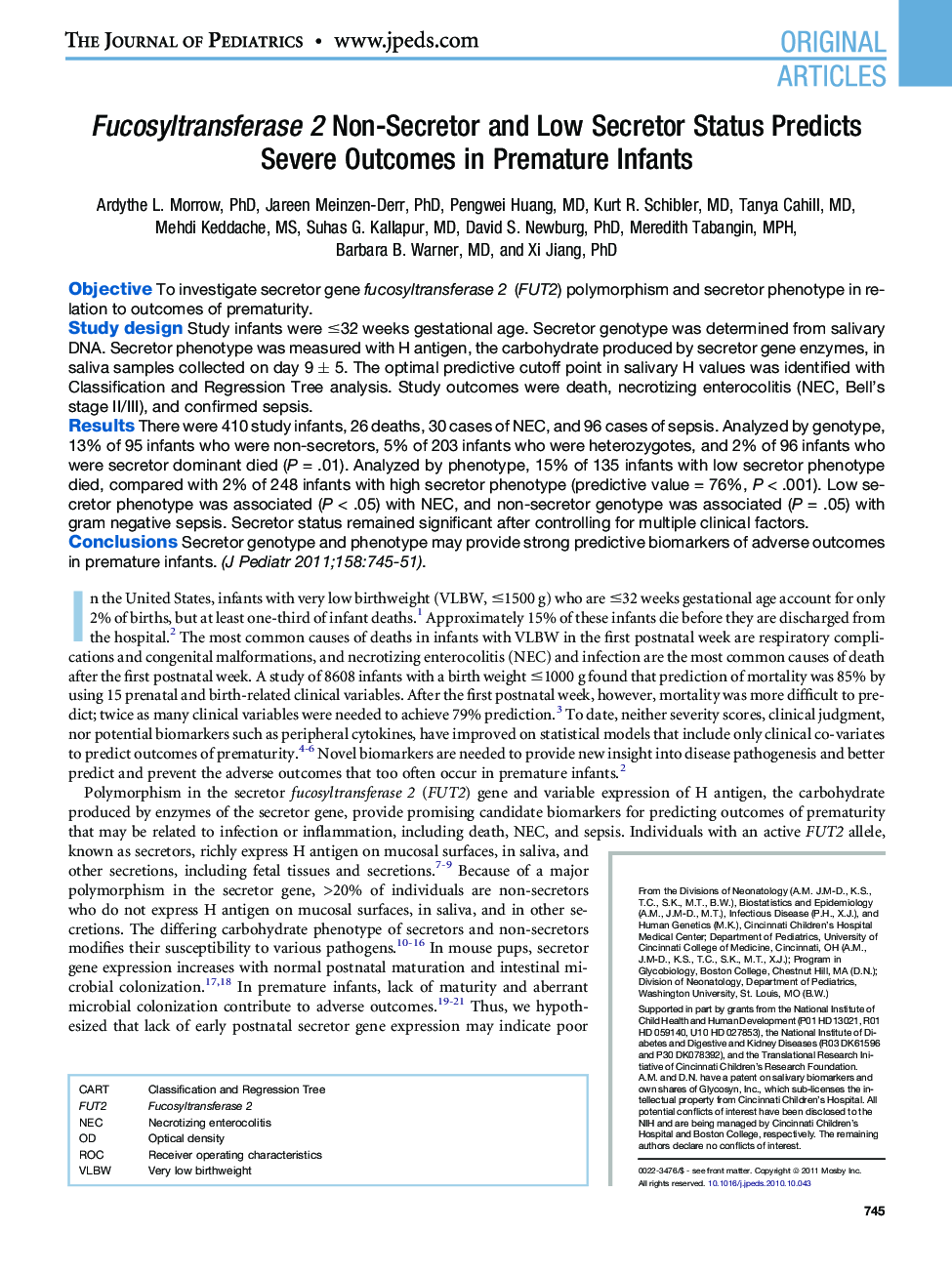| کد مقاله | کد نشریه | سال انتشار | مقاله انگلیسی | نسخه تمام متن |
|---|---|---|---|---|
| 4166845 | 1607494 | 2011 | 7 صفحه PDF | دانلود رایگان |

ObjectiveTo investigate secretor gene fucosyltransferase 2 (FUT2) polymorphism and secretor phenotype in relation to outcomes of prematurity.Study designStudy infants were ≤32 weeks gestational age. Secretor genotype was determined from salivary DNA. Secretor phenotype was measured with H antigen, the carbohydrate produced by secretor gene enzymes, in saliva samples collected on day 9 ± 5. The optimal predictive cutoff point in salivary H values was identified with Classification and Regression Tree analysis. Study outcomes were death, necrotizing enterocolitis (NEC, Bell’s stage II/III), and confirmed sepsis.ResultsThere were 410 study infants, 26 deaths, 30 cases of NEC, and 96 cases of sepsis. Analyzed by genotype, 13% of 95 infants who were non-secretors, 5% of 203 infants who were heterozygotes, and 2% of 96 infants who were secretor dominant died (P = .01). Analyzed by phenotype, 15% of 135 infants with low secretor phenotype died, compared with 2% of 248 infants with high secretor phenotype (predictive value = 76%, P < .001). Low secretor phenotype was associated (P < .05) with NEC, and non-secretor genotype was associated (P = .05) with gram negative sepsis. Secretor status remained significant after controlling for multiple clinical factors.ConclusionsSecretor genotype and phenotype may provide strong predictive biomarkers of adverse outcomes in premature infants.
Journal: The Journal of Pediatrics - Volume 158, Issue 5, May 2011, Pages 745–751